Introduction
Navigating the journey of supporting children with autism can be challenging, but with effective Applied Behavior Analysis (ABA) programs, significant strides can be made. This article delves into the essential components of successful ABA therapy, highlighting the importance of comprehensive assessments, individualized treatment plans, and evidence-based techniques. By exploring the critical role of collaboration among parents, educators, and therapists, the article underscores the holistic approach necessary for fostering a child's development across various settings.
Furthermore, it discusses the importance of initial and ongoing evaluations, the benefits and outcomes of ABA therapy, and the challenges faced during implementation. Through real-life case studies and insights from renowned experts, this article aims to empower caregivers with the knowledge and resources needed to support their children's well-being and ensure equitable opportunities for their growth and development.
Components of Effective ABA Programs
Effective ABA therapy programs for autism are meticulously designed to cater to the unique needs of each individual. These programs begin with thorough evaluations to understand the individual's strengths and challenges. Based on these assessments, individualized treatment plans are developed with clear, measurable goals. Consistent data collection is crucial to monitor progress and make necessary adjustments.
The programs employ evidence-based techniques such as discrete trial training, natural environment teaching, and behavior modification strategies. Discrete trial training breaks down skills into small, manageable steps, while natural environment teaching integrates learning into everyday activities. Behavior modification strategies focus on reinforcing positive behaviors and reducing negative ones.
Collaboration is key to the success of ABA programs. Parents, educators, and therapists collaborate to establish a comprehensive method that aids the young person's growth in various environments. The Council of Autism Service Providers recently emphasized the importance of high-quality implementation of ABA, stating, “ABA is a highly effective treatment for autism. But it has to be correctly implemented at the highest quality.”
Dr. David (Dan) R. Offord, a renowned child psychiatrist, once said, “I do not mind if my children are in a race as long as the race is fair.” This sentiment reflects the need for equitable and supportive participation of children with disabilities in all aspects of their lives. Ensuring that caregivers possess the resources they require is fundamental to supporting healthy development and family well-being.
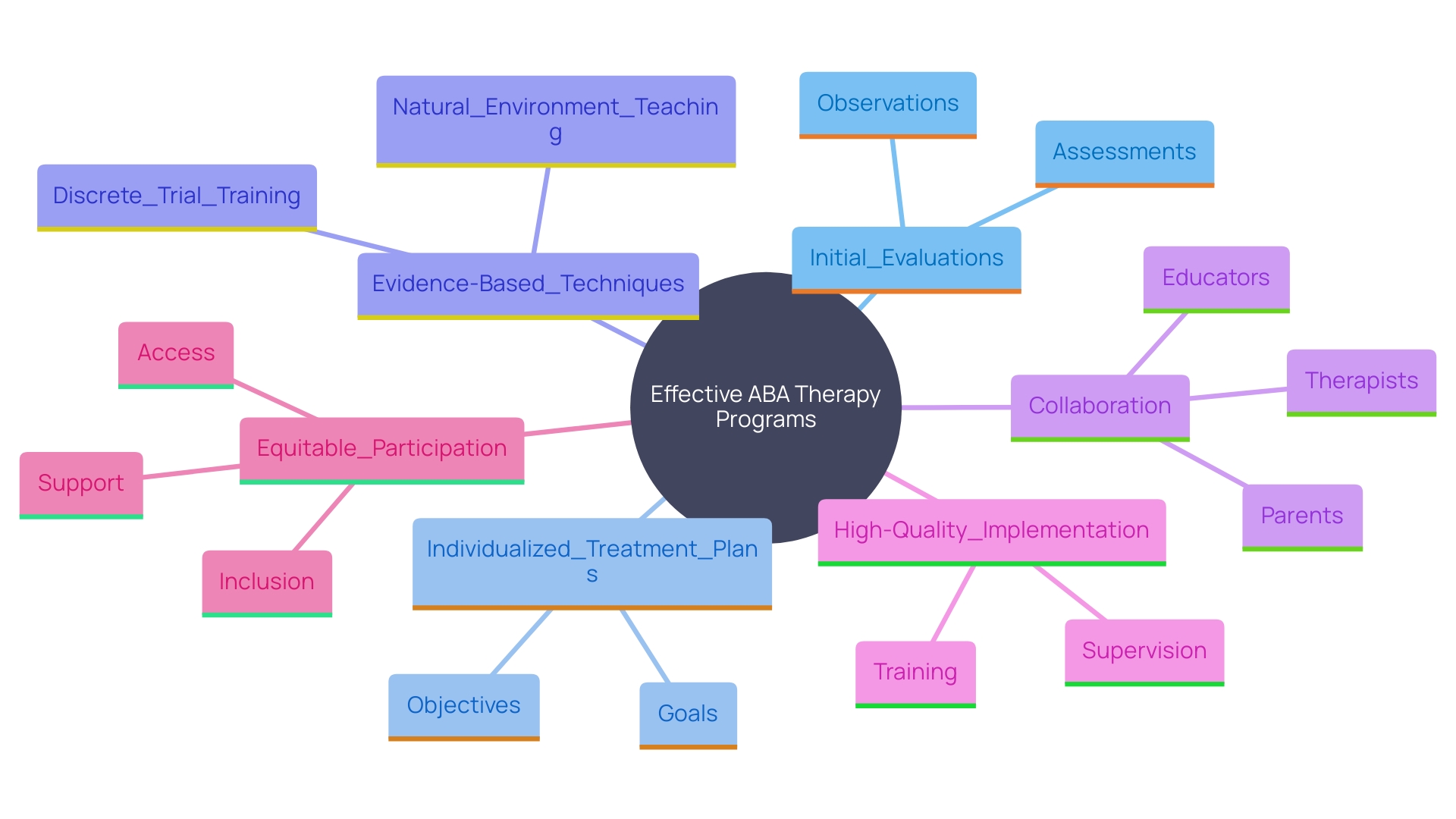
Importance of Initial and Ongoing Evaluation
Preliminary assessments serve a crucial function in developing ABA programs to address the particular requirements of youngsters with autism. These evaluations create a foundational understanding of the young person's strengths, challenges, and preferences. This is crucial for supporting their mental health and ensuring they can participate fully in various aspects of life, such as school, home, and leisure activities. Dr. David (Dan) R. Offord, a prominent psychiatrist for youth, stressed the significance of a just competition for youngsters, underlining the necessity for equal opportunities and assistance.
Ongoing evaluations are equally essential, involving regular monitoring of the individual's progress and the effectiveness of the interventions. These continuous evaluations are essential in recognizing and addressing any unmet needs, thereby alleviating chronic stress for both the young individual and their caregivers. The data collected through these evaluations allow for necessary adjustments to the ABA program, ensuring it remains responsive and effective. This approach assists young individuals in reaching their developmental objectives while encouraging a well-supported and harmonious involvement in their communities.
The significance of such customized and flexible methods is highlighted by insights from the Interagency Autism Coordinating Committee (IACC), which aims to improve coordination and communication in research and services related to developmental disorders. By combining specialized guidance and community input, ABA programs can enhance their support for young individuals with developmental disorders, including those with simultaneous emotional and behavioral issues, who are at significant risk of social isolation. This guarantees that all young individuals, regardless of their abilities, have the resources they need for healthy development and meaningful social participation.
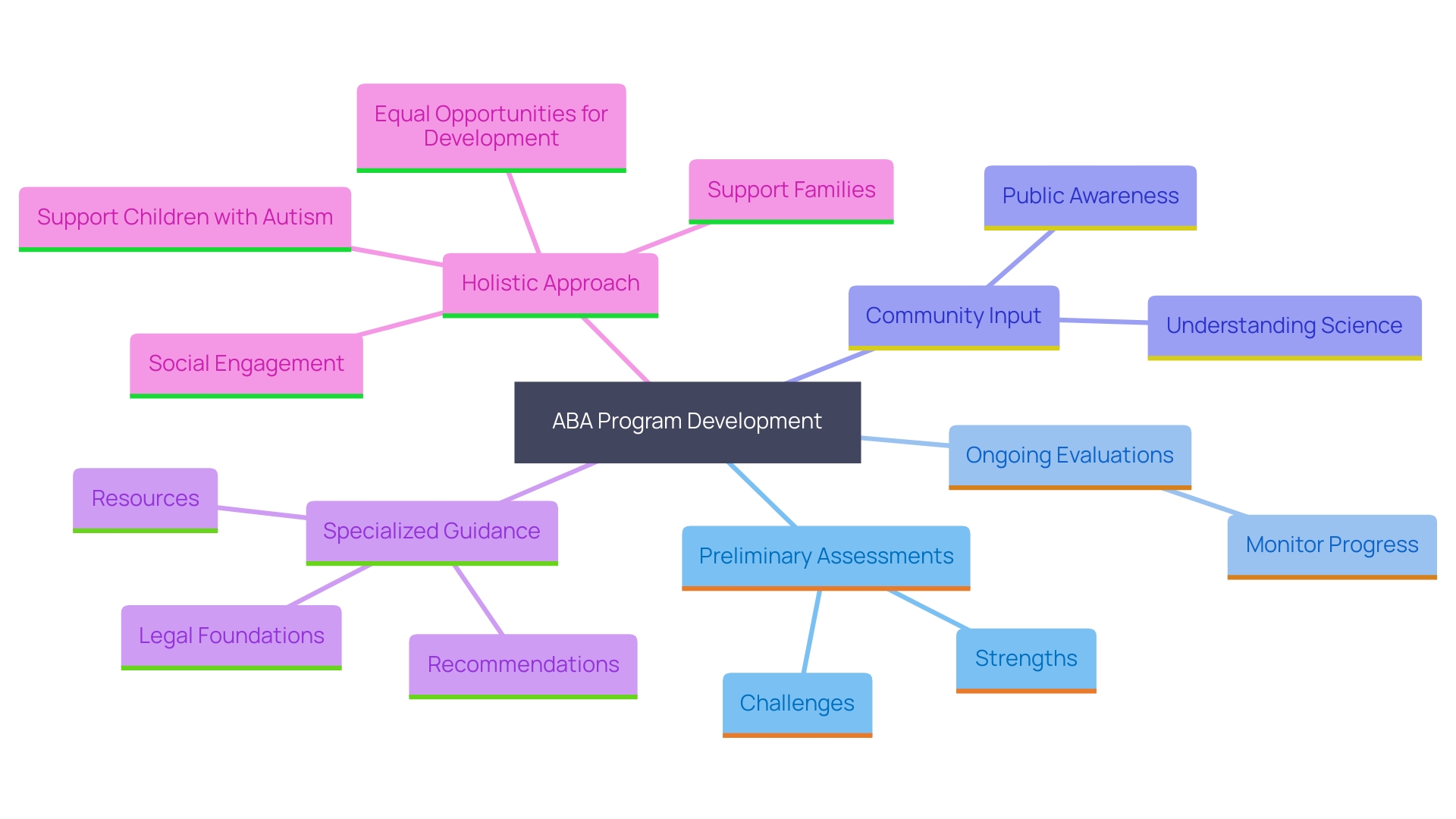
Case Study: ABA Program Evaluation and Outcomes
A compelling case study highlights the transformative impact of ABA therapy on a six-year-old boy diagnosed with a developmental disorder. Over a 12-month period, the child received a meticulously tailored ABA program designed to address significant communication and social skill challenges identified through initial assessments. The program's interventions were targeted specifically to enhance these areas, with regular evaluations revealing marked improvements. The boy's ability to engage in conversations and participate in group activities significantly increased, as reported by his parents. This case underscores the effectiveness of personalized ABA strategies in fostering meaningful behavioral and social development.
The increasing awareness of the condition, as noted by Dr. Jan Blacher, emphasizes the necessity for diverse and adaptive intervention procedures. The prevalence of autism has risen dramatically from 1 in 2,500 to 1 in 36 today, underscoring the importance of early and precise interventions. Dr. David (Dan) R. Offord's viewpoint on ensuring fair support for youth with disabilities corresponds with the case study's conclusions, emphasizing the necessity for well-supported involvement in all life areas to enhance mental well-being and equity.
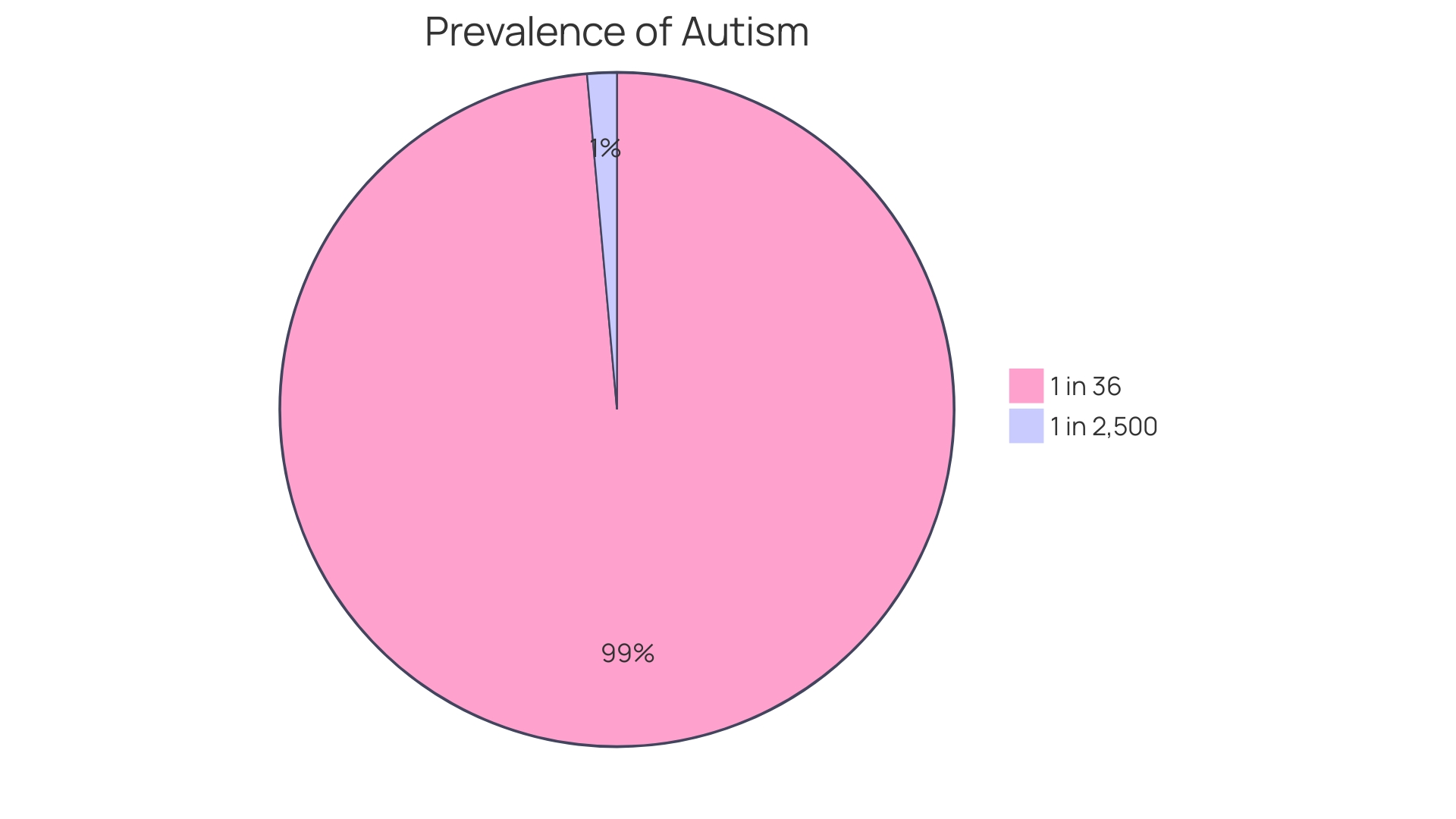
Benefits and Outcomes of ABA Therapy
The benefits of ABA therapy go far beyond immediate behavioral adjustments. Families often witness significant improvements in social interactions, communication, and adaptive behaviors. Children develop greater independence and self-regulation capabilities, which are essential for their overall development. Long-term outcomes include enhanced academic performance and better integration into school settings. The structured approach of ABA therapy ensures that individuals can generalize the skills they learn in therapy to everyday situations, fostering their continuous growth and development. As Dr. David (Dan) R. Offord emphasized, ensuring fair opportunities for young individuals with disabilities is vital for their mental health and overall well-being. Engaged and well-supported participation in school, home, and leisure activities is a fundamental determinant of mental health and equity. By acknowledging the distinct requirements and strengths of these young individuals, ABA therapy plays a crucial role in alleviating persistent stress and fostering healthy growth.
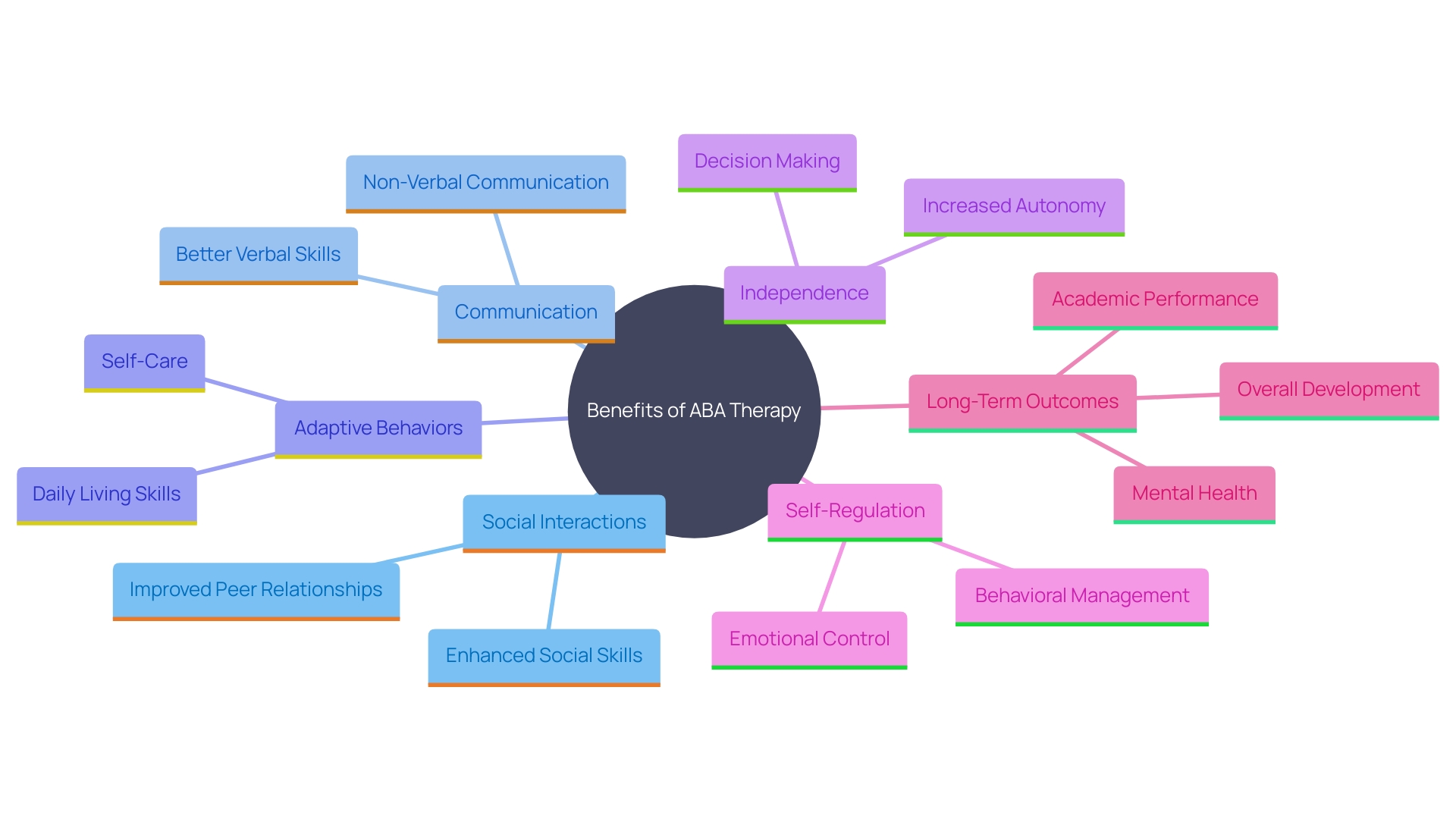
Challenges and Considerations in Implementing ABA
Implementing ABA therapy can present several challenges. Children may sometimes resist participating, and maintaining consistent program delivery can be difficult. Additionally, caregivers often face the risk of burnout. To address these issues, it's essential for parents and practitioners to engage in open communication, set realistic expectations, and adapt to the developing individual's evolving needs. 'Training for parents and caregivers is essential, as it provides them with the necessary skills to support their offspring effectively.'.
As Dr. David (Dan) R. Offord, a respected child psychiatrist, once said, “I do not mind if my children are in a race as long as the race is fair.” Ensuring that children with disabilities, including those with autism, receive well-supported participation in school, home, and leisure activities is crucial for their mental health. This also signifies acknowledging both their unfulfilled requirements and the strengths they contribute to their communities. Reducing chronic stressors and providing caregivers with the resources they need can significantly impact the family's well-being.
Moreover, continuous and flexible support is key. As Doreen Granpeesheh, CEO of the Center for Autism and Related Disorders, emphasized, flexibility in work models can lead to better talent attraction and retention, which in turn can improve the quality of care provided. Hence, a thorough assessment by a Board Certified Behavior Analyst (BCBA), clear goal setting, and consistent monitoring are essential components of effective ABA therapy. Establishing a solid connection with parents through clear communication and active listening can further empower them, ensuring a collaborative effort in supporting their offspring's development.
Long-Term Outcomes and Improvements in ABA Therapy
Research underscores that young individuals who undergo ABA therapy often experience sustained improvements across various life domains. Long-term studies reveal that many children maintain advancements in communication and social skills well into adolescence and adulthood. A robust ABA program can pave the way for increased educational and employment opportunities, significantly enhancing independence and quality of life for individuals on the spectrum.
The Autism Community in Action (TACA) highlights the importance of early intervention, noting that targeting social communication early can set the stage for later language competency. This approach is crucial as social communication is a core challenge in individuals with developmental disorders. The Brain Balance program, grounded in evidence from decades of research on brain development and neuroplasticity, also supports early intervention's effectiveness in improving behavior, social, and academic success.
Dr. Jan Blacher, a research professor at UC Riverside, discusses the evolving understanding of the condition, noting a significant increase in diagnosed cases from 1 in 2,500 to 1 in 36. This reflects a broader recognition of neurodevelopmental conditions, emphasizing the need for tailored interventions like ABA that cater to diverse needs. Furthermore, the Interagency Autism Coordinating Committee (IACC) aims to improve collaboration and communication among federal agencies and the community, fostering advancement in research and services related to developmental disorders.
As Dr. David Offord, a renowned psychiatrist for young people, emphasized, ensuring fair and well-supported participation for individuals with disabilities is fundamental to their mental health and equity. Involving individuals with autism in significant social engagement through methods like ABA can meet their unique requirements and alleviate persistent sources of stress, ultimately promoting their healthy growth and overall wellness.
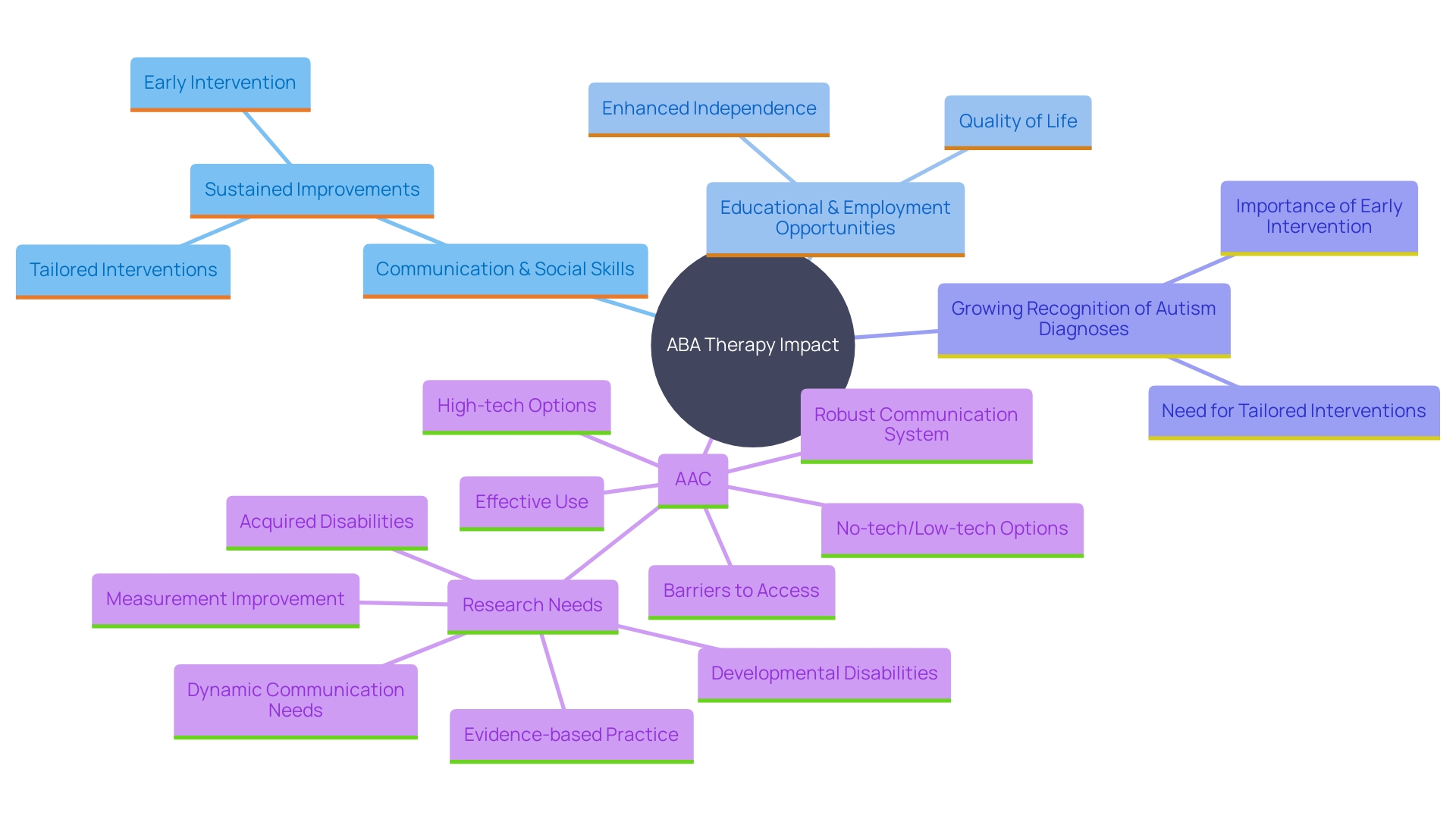
Generalization of ABA Skills to Real-Life Settings
One of the most crucial elements of ABA therapy is ensuring that the skills learned are applied in everyday settings. Strategies often involve training in natural environments, such as at home or school, to facilitate this transfer. This method allows young individuals to adjust their learning to real-life situations, fostering smoother transitions and interactions within their communities. The partnership between therapists and families is essential in reinforcing these skills across various settings. As Dr. David R. Offord once noted, ensuring that young individuals with disabilities are well-supported across major domains of their lives is key to their mental health and equitable development. This principle underscores the importance of a collaborative approach in ABA therapy, where consistency and reinforcement in familiar environments play pivotal roles. Furthermore, tools such as the Autism BASICS app play a crucial role in connecting therapeutic environments with home life, providing daily activities that parents and therapists can utilize to aid the individual's development. This holistic approach not only aids in skill generalization but also empowers parents with resources to actively participate in their child's development.
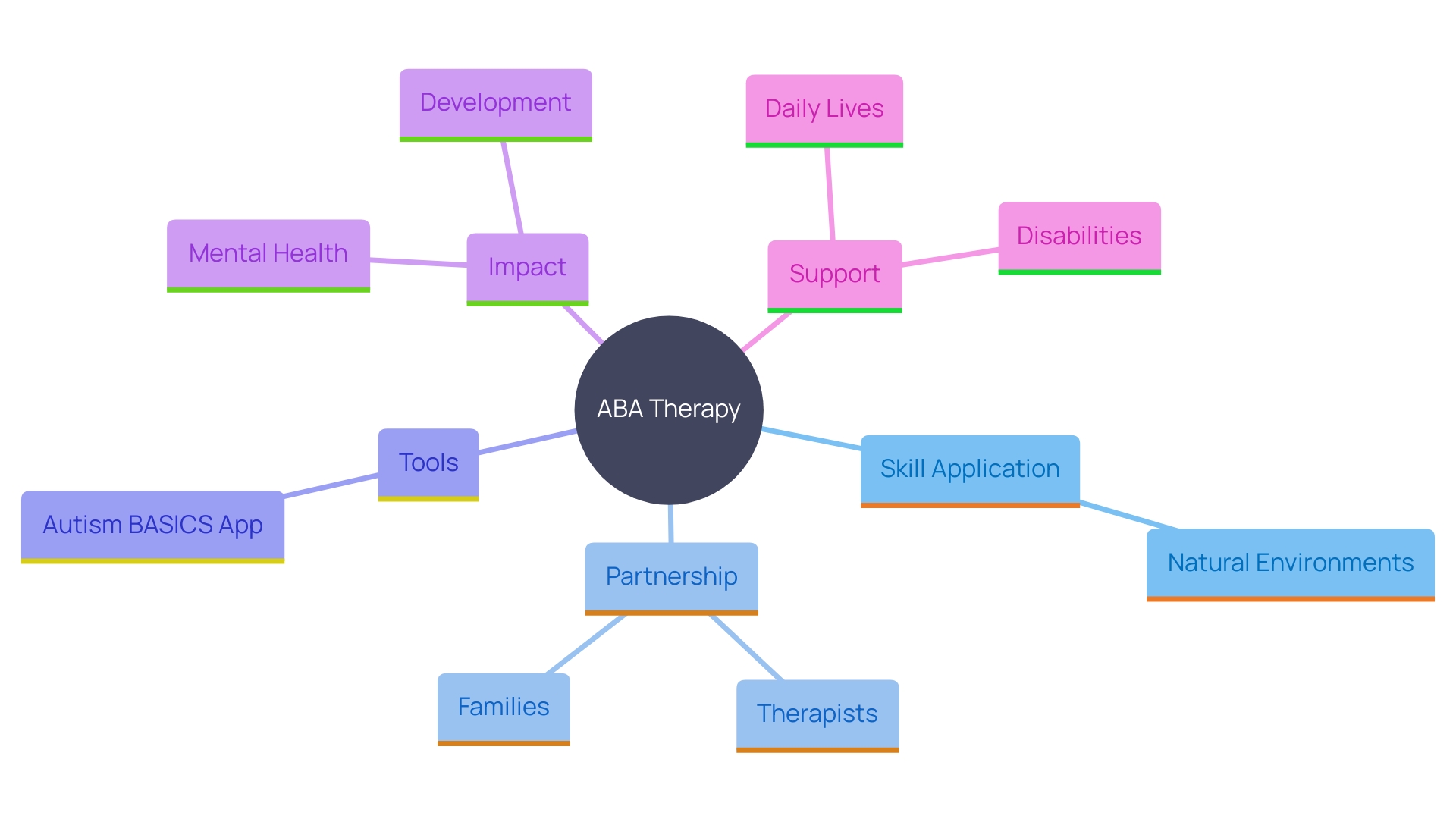
Conclusion
The exploration of Applied Behavior Analysis (ABA) therapy emphasizes its critical components, such as comprehensive assessments and individualized treatment plans tailored to each child's unique needs. This approach ensures that interventions are not only effective but also adaptable, allowing for continuous monitoring and adjustments. The collaboration among parents, educators, and therapists is paramount, fostering a holistic environment where children can thrive across various settings.
Initial and ongoing evaluations are essential in shaping these programs, revealing insights that guide interventions and support. By regularly assessing progress, caregivers can address any unmet needs, thereby reducing stress for both the child and the family. The case studies presented highlight the tangible benefits of ABA, showcasing significant improvements in communication and social skills, which lead to enhanced independence and overall quality of life.
While challenges in implementing ABA therapy exist, open communication and flexibility among all parties involved can mitigate these issues. Training and support for parents are vital in equipping them with the tools necessary for their child's success. Long-term outcomes indicate that children who engage in ABA therapy often maintain their developmental gains, paving the way for better educational and social opportunities in the future.
Ultimately, the commitment to ensuring equitable participation for children with autism is crucial. By leveraging the strengths of ABA therapy, families can empower their children to navigate the world with confidence, promoting their mental health and well-being. The journey may be complex, but the potential for growth and meaningful engagement in all aspects of life is within reach.




